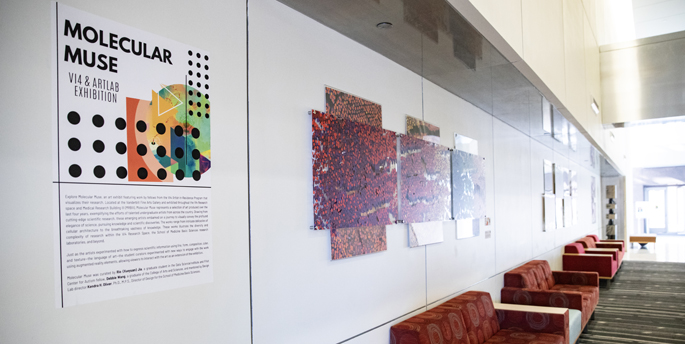
Artwork inspired by scientific research is on display in the north lobby of Light Hall through the end of the year.
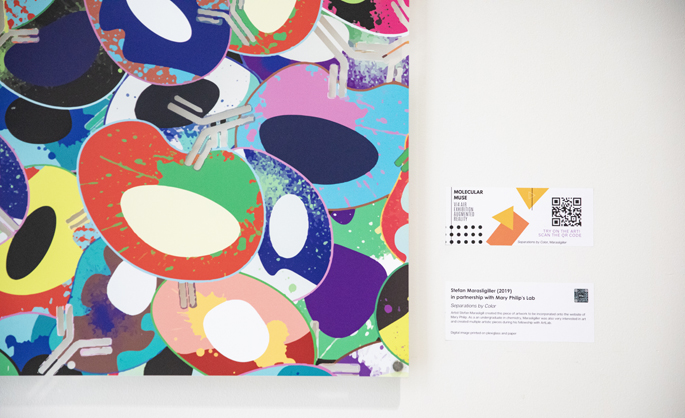
The “Molecular Muse” exhibit is a sampling of pieces from the Vanderbilt Institute for Infection, Immunology and Inflammation Artist-in-Residence (VI4-AiR) program, which brings together scientists and artists to create and promote art as a visual science communication tool. The program was recently awarded a fourth year of funding from the Burroughs Wellcome Fund (BWF).
“We are thrilled that the gallery exhibit showcasing art generated by the VI4-AiR program is now featured in the lobby of Light Hall. This is a wonderful way to draw attention to the incredible work generated by these talented artists,” said Eric Skaar, PhD, MPH, director of VI4 and Ernest W. Goodpasture Professor of Pathology.
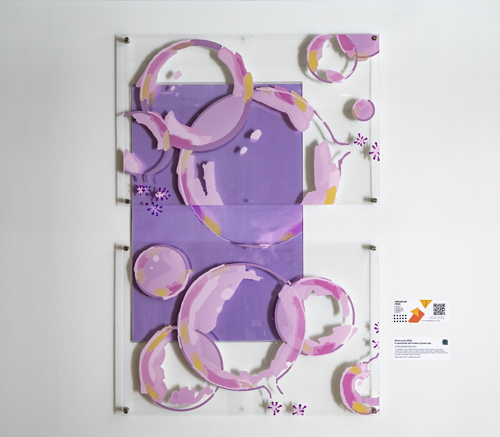
Skaar and Kendra Oliver, PhD, associate professor of Pharmacology and director of Design for School of Medicine Basic Sciences, developed and co-lead the VI4-AiR program.
“We are excited to have received another round of funding from the Burroughs Wellcome Fund, tripling our budget for the VI4-AiR program this summer,” Oliver said. “Our partnership with the BWF has further expanded our national impact, and we have been asked to share our program’s successful practices at symposiums and conferences that are interested in further exploring the intersection between art and science.”
Oliver, a scientist and artist, established the cross-disciplinary ArtLab in 2017 to support visual science communication approaches and outreach. The VI4-AiR program, a collaboration between ArtLab and VI4, launched in 2019 and was awarded a three-year grant from BWF in fall 2020.
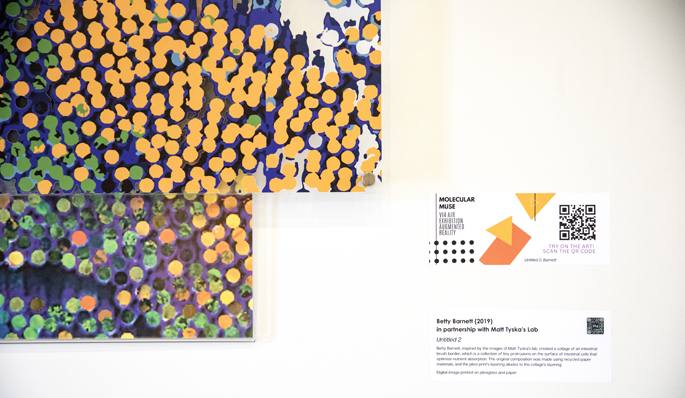
VI4-AiR pairs faculty scientists and their teams with undergraduate artists for a 10-week summer program conducted virtually. During the program, the artists meet with mentors from the partner labs to learn about research projects and approaches, and they create art pieces that are representative of the laboratory’s research.
Since its founding, the VI4-AiR program has brought together 119 artists and 71 scientists. The creative collaborations have resulted in over nine journal covers accepted, graphics in 15 accepted publications, and 202 images, animations or other media for science conferences, websites and social media, Oliver said. The benefits and potential opportunities for artists and scientists based on surveys of participants during the first three summers were published in PLOS ONE.
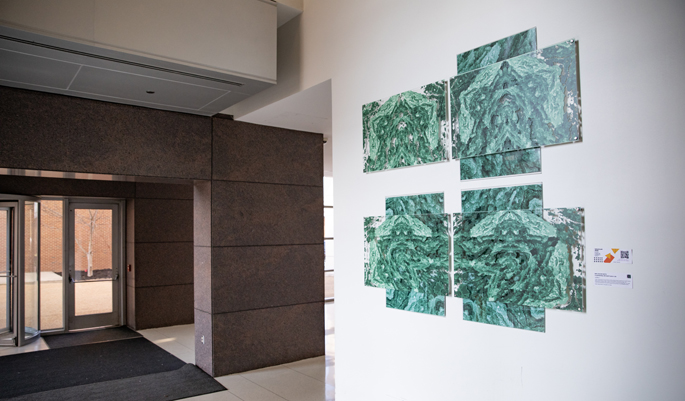
Over the program’s lifetime, more than 15% of the undergraduate artists have been students at historically Black colleges and universities or institutions serving other underrepresented groups.
“The VI4-AiR program has emerged as a national model for initiatives at the interface of art and science,” Skaar said. “We look forward to expanding this program in the coming year with renewed support from the BWF.”
Oliver pointed out the program’s broader impact at Vanderbilt.
“I think ArtLab and the VI4-AiR program have exposed other efforts across Vanderbilt to blend disciplines, including efforts toward art for wellness from the Community Art Initiative led by Vanderbilt University School of Medicine students, cross-disciplinary exploration with the Vanderbilt Fine Art Gallery, and even rethinking hospital fashion in the FabLab at the Wond’ry,” she said.
In addition to the “Molecular Muse” exhibit in Light Hall, other pieces of VI4-AiR artwork are hanging in Medical Research Building III and VI4 research spaces.












